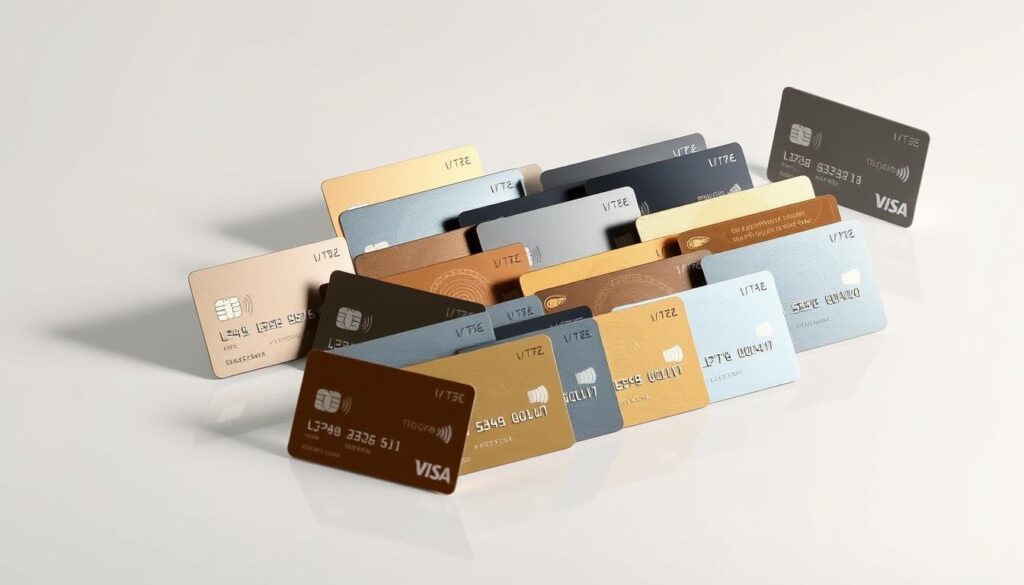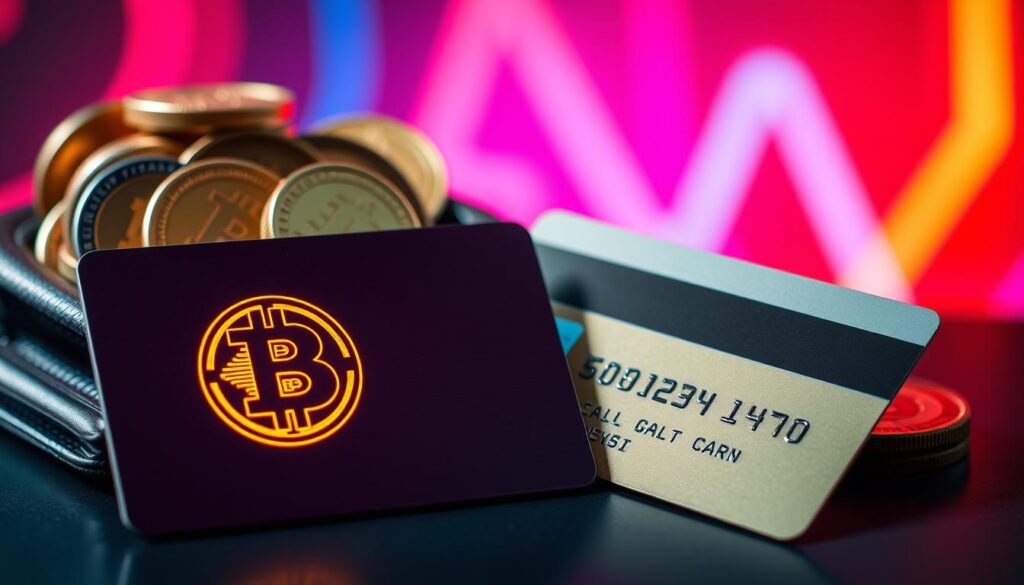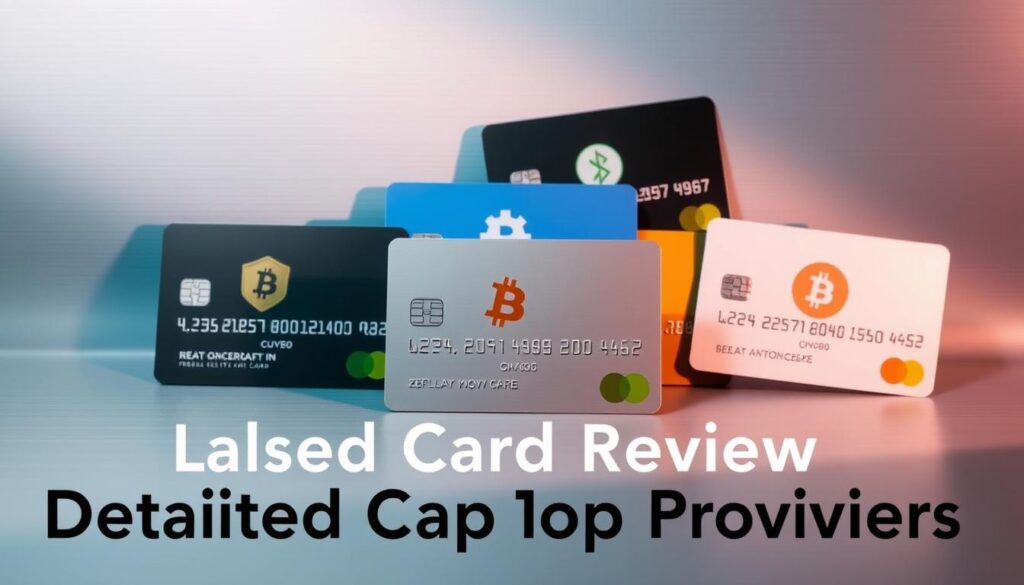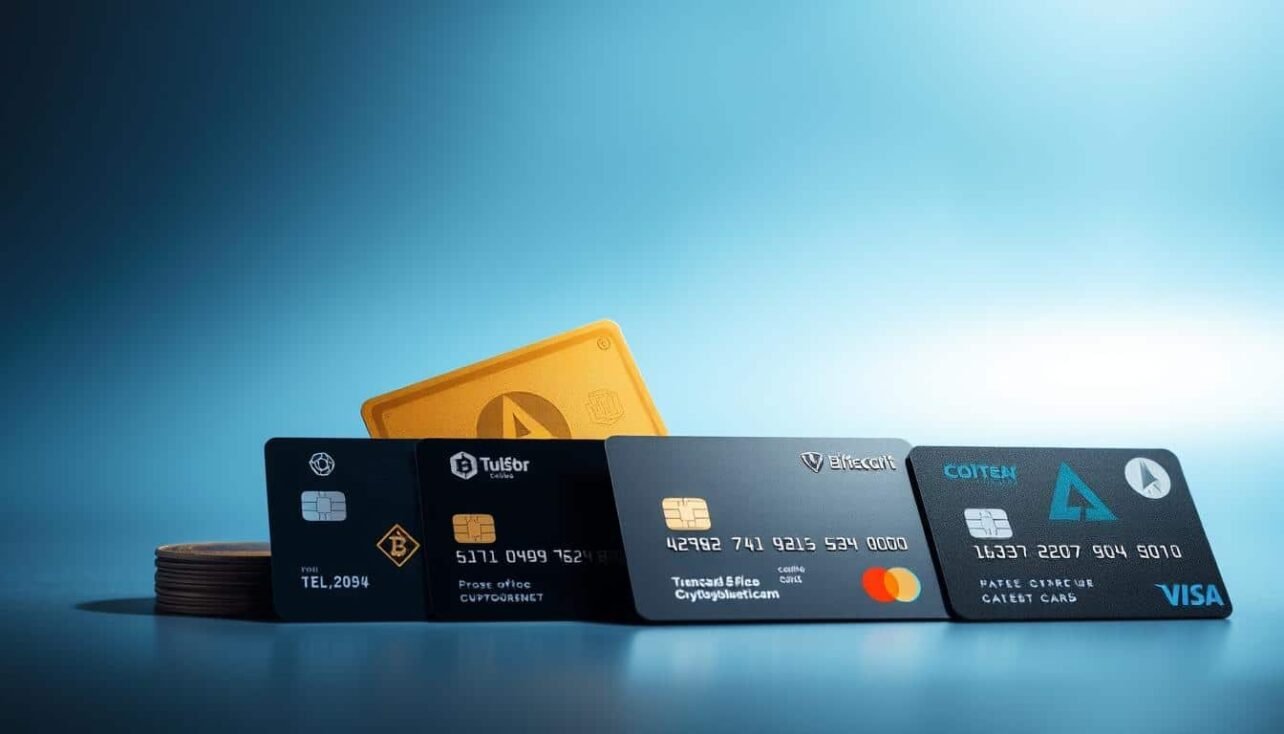Modern financial solutions now let users spend digital currencies as easily as cash at millions of global merchants. What began as experimental tech for early crypto adopters has matured into practical payment tools accepted wherever Visa or Mastercard work. This shift creates new opportunities to earn rewards while maintaining exposure to digital assets.
Reward structures vary widely across providers, with some offering up to 15% back on purchases. However, hidden costs like conversion fees or minimum balance requirements can erase these benefits. Savvy users prioritize platforms offering straightforward terms alongside zero yearly charges.
Geographic availability plays a crucial role in card selection. While some options work globally, others restrict access based on residency. Advanced users often seek tools integrating with decentralized finance platforms, while newcomers prefer simple interfaces requiring minimal crypto knowledge.
Key Takeaways
- Digital payment tools now function like traditional cards at most retailers
- Reward percentages range from basic to premium tiers
- Several providers eliminate yearly membership costs
- Regional availability impacts card eligibility
- Staking requirements differ significantly between platforms
- Integration with existing financial services varies by provider
Overview of Cryptocurrency Payment Cards
Today’s digital wallets offer seamless integration between blockchain assets and physical purchases. These tools let you spend digital holdings anywhere standard payment networks operate – from coffee shops to online retailers. Instant conversion technology handles the exchange from crypto to local currency, making transactions as smooth as traditional banking methods.
What Sets Crypto Cards Apart
Unlike conventional options, these payment solutions connect directly to blockchain portfolios. They automatically convert holdings during purchases while letting users retain ownership of their assets. Some platforms even let you earn interest on stored balances or borrow against them without selling.
Flexibility defines these systems. Most support multiple coins, allowing spending from Bitcoin to stablecoins in one interface. Advanced versions integrate with decentralized apps, turning everyday spending into opportunities for portfolio growth.
Key Benefits and Use Cases
Frequent travelers benefit from borderless transactions without currency exchange fees. Investors appreciate maintaining exposure to potential asset appreciation while accessing funds. Small business owners use these tools to accept global payments without third-party processors.
Specialized features include tax-efficient spending methods and rewards paid in digital tokens. Security measures often surpass traditional options, with real-time transaction alerts and customizable spending limits.
Best cryptocurrency credit cards with cashback rewards and no annual fees

Financial platforms now compete to offer premium payment tools that merge traditional convenience with blockchain benefits. Five standout options combine competitive rewards with cost-efficient structures.
| Platform | Reward Rate | Key Perks | Network |
|---|---|---|---|
| Gemini | Up to 4% | Metal design, instant rewards | Mastercard |
| Crypto.com | Up to 8% | Streaming rebates, lounge access | Visa |
| Coinbase ONE | 2-4% Bitcoin | Genesis Block engraving | American Express |
| Nexo | 2% tokens | Interest-bearing balances | Mastercard |
The Gemini option provides 4% returns on fuel and transit purchases, deposited immediately as digital assets. Its durable metal construction appeals to frequent spenders wanting premium aesthetics.
Crypto.com’s tiered Visa program rewards loyal users through staking. Higher tiers unlock 8% rewards plus lifestyle benefits like complimentary Spotify subscriptions. Airport lounge privileges cater to global travelers.
Coinbase’s upcoming American Express partnership introduces Bitcoin-specific rewards on all transactions. The metal card design features blockchain history engravings, blending tech heritage with modern finance.
Nexo combines spending tools with wealth-building features. Users earn interest on idle funds while getting up to 2% back in platform tokens. This dual functionality supports both daily expenses and long-term growth strategies.
All listed options remove recurring costs while delivering rewards that frequently surpass traditional banking products. Their varied structures accommodate different spending habits and investment goals.
How Crypto Credit Cards Work: From Fiat to Digital Spending
Payment systems bridging digital assets and everyday spending operate through advanced financial rails. These tools convert holdings automatically during transactions, letting users tap into blockchain portfolios without manual conversions.

Credit vs. Debit: The Core Differences
Credit-based options let users borrow against collateral or credit scores. Platforms like Nexo enable spending without liquidating assets, preserving long-term investment strategies. Borrowed amounts typically carry interest rates tied to collateral value.
Debit systems, such as those offered through crypto debit options, deduct funds directly from linked wallets. Transactions use real-time exchange rates, converting crypto to local currency instantly. This approach suits users preferring immediate balance updates.
Understanding Cashback Calculations
Reward structures vary by platform and spending habits. Base rates often start at 1%, increasing with account tiers or staking commitments. For example, locking $4,000 in tokens might boost rewards by 300% on select purchases.
Category-specific multipliers apply to areas like dining or travel. Some systems combine multiple variables – a 2% base rate could jump to 6% when spending on groceries with premium membership status. These layered incentives create personalized earning potential.
Detailed Card Reviews from Top Providers
Leading financial platforms now deliver specialized payment tools tailored to different user needs. Our analysis compares six major options, evaluating costs, reward structures, and unique features to help you find your ideal match.

Coinbase, Binance, and Crypto.com Insights
The Coinbase Card offers 4% rewards on Stellar or Graph transactions, with 1% returns on Bitcoin purchases. Users pay a $4.95 issuance fee and 2.49% conversion charges, making it better suited for altcoin enthusiasts. Its straightforward mobile app integration simplifies tracking rewards.
Binance’s system shines with zero conversion fees and tiered BNB-based benefits. Holders with 600+ BNB tokens unlock 8% cashback – one of the highest rates available. The platform’s global payment network supports 50+ currencies for international shoppers.
Crypto.com’s Visa card program requires staking CRO tokens for premium tiers. The Obsidian level demands $1 million locked but delivers 8% rewards plus private jet discounts. Free Netflix and Spotify subscriptions add recurring value for entertainment-focused users.
Nexo, Gemini, and Bitpanda Highlights
Nexo’s hybrid card combines debit spending with credit lines at 0% APR for platinum members. Users earn 14% interest on idle funds while getting 2% back in NEXO tokens. No transaction fees make it cost-effective for high-volume spenders.
Gemini focuses on everyday categories – 4% on gas, 3% at restaurants, and 2% for groceries. Rewards deposit instantly without staking requirements, though international purchases carry 3% fees. The metal card design appeals to users valuing physical durability.
Bitpanda ties Bitcoin rewards to BEST token ownership. Holding 50,000+ BEST unlocks 2% returns and free ATM withdrawals. European users benefit most from its fee-free EUR transactions and instant balance updates.
Exploring Key Benefits: Cashback, Perks, and No Annual Fees
Innovative spending solutions offer more than convenience—they unlock financial benefits rarely seen in traditional finance. Users enjoy premium features like instant crypto deposits and subscription rebates while avoiding yearly charges. These tools turn routine transactions into opportunities for portfolio growth.

Maximizing Value Through Daily Use
Every swipe adds value when platforms reward routine purchases. Grocery runs earn 4% back at Gemini, while Crypto.com reimburses Spotify and Netflix subscriptions. Frequent travelers save hundreds yearly with Priority Pass lounge access included in higher-tier programs.
Metal card designs provide durability and status appeal. Premium tiers often include unlimited ATM withdrawals—up to $1,000 monthly—eliminating standard banking fees. Instant reward deposits let users reinvest earnings immediately, a feature unmatched by conventional options.
Flexibility defines these systems. Choose between Bitcoin rewards or altcoins to match investment strategies. As leading crypto reward programs evolve, they increasingly outperform traditional cards in both perks and cost efficiency.
For those exploring cashback opportunities, the combination of zero annual fees and tangible benefits creates compelling value. From airport lounges to streaming services, these tools reshape how users interact with their digital assets.
Understanding Staking Requirements and Activation Criteria
Digital payment platforms use staking systems to balance accessibility with premium features. These frameworks reward long-term users while maintaining financial flexibility. Providers structure tiers to accommodate different investment levels, from casual spenders to high-net-worth individuals.
Staking Tiers for Crypto.com and Coinbase Cards
Crypto.com’s tiered system starts with zero commitments for basic access. The $500 Ruby Steel tier unlocks 2% returns and higher ATM limits. Users staking $5,000 gain airport lounge passes and streaming rebates. Top-tier Obsidian members commit $500,000 for 8% rewards and exclusive travel perks.
Coinbase takes a subscription approach with its $49.99/year membership. This model suits users preferring predictable costs over asset locking. Both systems demonstrate how platforms balance accessibility against premium benefits.
Nexo and Bitpanda: Unlocking Better Rates
Nexo boosts rewards when balances exceed $5,000, offering 2% returns alongside interest-earning accounts. Bitpanda requires holding BEST tokens – 5,000 for basic perks, 50,000 for premium features. These models encourage asset retention while providing scalable benefits.
For detailed comparisons of current programs, explore this 2025 crypto card guide. Most platforms let users upgrade tiers as their portfolios grow, creating natural progression paths for committed holders.


No comments yet